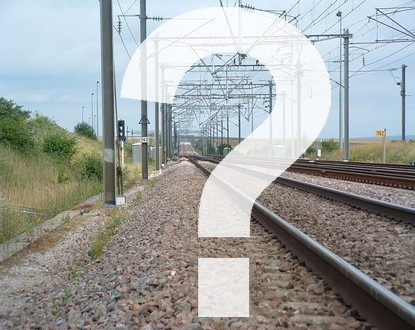If the goal is clear and everyone agrees on it, the problem arises with priorities, timing, and, a non-negligible question in these times of economic gloom, funding. The members of the national commission “Mobility 21” were in Nice to hear from elected officials and ultimately to sift through several projects of national interest.
For once, regional and local elected officials (department and metropolis) found themselves united in their request to the Commission 21, led by Philippe Duron (PS) and of which Louis Négre, senator-mayor of Cagnes, is a member. They interviewed the leaders and stakeholders from the Azure coast: the Côte d’Azur must be opened up in relation to the two major mobility axes, the Marseille-Paris connection on one side and the Mediterranean arc, Barcelona-Genoa, on the other.
An image of unanimity, then, this Thursday afternoon, in the prefecture of the Alpes-Maritimes to try to make progress on the future high-speed line (LGV) project. All this to advance the rail system reform initiated by the government and to meet a “sustainable transport vision”.
Michel Vauzelle, regional president, Christian Estrosi, mayor of Nice and president of the Nice Côte d’Azur Metropolis, Eric Ciotti, president of the general council, and prefect Christophe Mirmand, therefore, presented their arguments to the commission and felt that they were heard.
Provençals and Azureans have already agreed in January to proceed in stages: first, to resolve the issue of regional trains (TER), crowded and too often late, by freeing up space on the rails for them. Only part of the new route would be built.
The South Metropolis scenario for the route of “the new line” anticipates little change. An axis descends from Paris to Marseille. The route then follows the coast to Toulon, cuts through the Var diagonally to Le Muy, and then heads to Nice by digging a tunnel. It would allow for 12 million more travelers each year.
Objective: to unclog the railway nodes of the major cities in the Mediterranean arc and bring Marseille closer to Nice in 1 hour 15 minutes compared to today’s 2 hours 30 minutes. The first sections could be put into service after 2020, but it’s still unknown who will pay and, more importantly, how much.
High-speed travel, useful to bring Nice closer to Paris and shorten the 13-hour journey between Genoa and Barcelona, is postponed to 2040.
Biblical timelines that do not bode well! Who will be there at that time to discuss it?
But, an important point not to neglect, the anti-LGV Paca group, which includes around a hundred associations, remains unyielding and is still as mobilized after eight years of struggle: the region mainly needs local transport.
Regional trains rather than high-speed trains: something that might make the ears of the Mobility 21 Commission members tingle.
If one assumes that rail should contribute to improving travel around Nice, Toulon, and Marseille, to say nothing of “resolving the road congestion,” then “the LGV Paca, alias the new line, is totally incompatible with the needs of the local populations and environmental issues,” claim the protesters.
The group of deputies from all political backgrounds, led by Philippe Duron (PS), and supported by transport specialists, will deliver its opinion in June.


